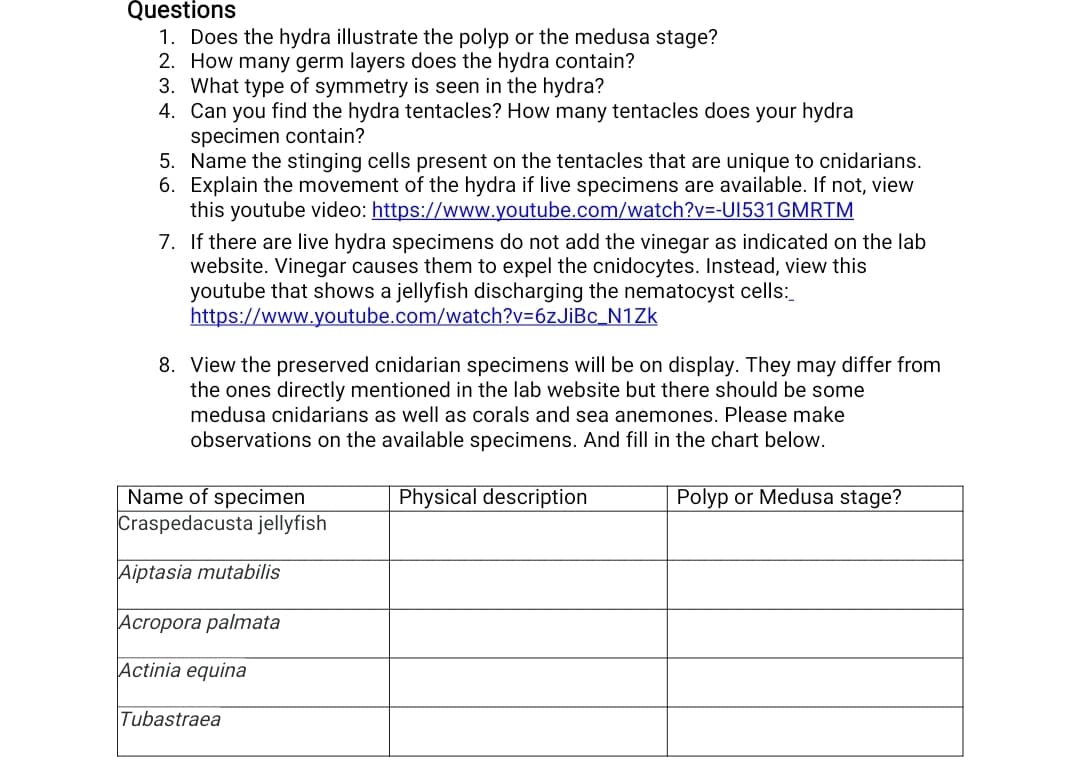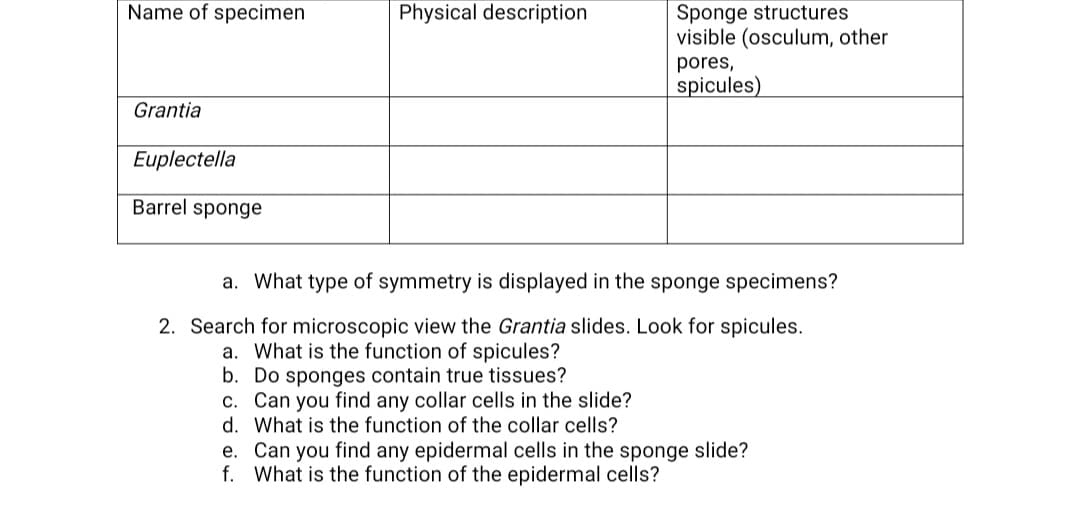What type of symmetry is seen in the roundworm? Does it exhibit cephalization? Ascaris is a parasite that swims constantly in human intestines. What structure protects the nematode from being digested?
What type of symmetry is seen in the roundworm?
Does it exhibit cephalization?
Ascaris is a parasite that swims constantly in human intestines. What structure protects the nematode from being digested?
View the Trichinella slide. Trichinella is also a parasite. It can infect humans as well as other mammals like pigs, bears, and rodents. If untreated, it can lead to death.
What mammal tissue does this roundworm infect?
Draw a picture below of the Trichinella as viewed under the microscope.
Although not mentioned on the website, if available view the live vinegar eel specimens. If there are no live specimens available, check out this you tube video instead: https://www.youtube.com/watch?v=UnjwvtFvyeQ
Describe the movement of the vinegar eels.
Do they have a complete or incomplete


Trending now
This is a popular solution!
Step by step
Solved in 2 steps









